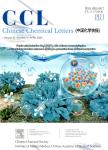Quinoline-based anti-MRSA agents: Current development, structure-activity relationships, and mechanisms
作者机构:College of Veterinary MedicineHenan Agricultural UniversityZhengzhou 450046China School of Pharmaceutical SciencesZhengzhou UniversityZhengzhou 450001China Hunan Province Cooperative Innovation Center for Molecular Target New Drug StudySchool of Pharmaceutical ScienceHengyang Medical SchoolUniversity of South ChinaHengyang 421001China
出 版 物:《Chinese Chemical Letters》 (中国化学快报(英文版))
年 卷 期:2024年第35卷第1期
页 面:52-63页
核心收录:
学科分类:1007[医学-药学(可授医学、理学学位)] 10[医学]
基 金:the National Natural Science Foundation of China(No.32272575) National College Student Innovation and Entrepreneurship Training Program(No.202210459164)for financial support
主 题:Quinoline analogue Methicillin-resistant Staphylococcus aureus Antibacterial activity Structure–activity relationship Antibacterial mechanism
摘 要:Methicillin-resistant Staphylococcus aureus (MRSA), the most common pathogen in hospital and community environments, can cause serious and even fatal infections. The antibiotics currently used for clinical treatment of MRSA have developed resistance, and there is an urgent need to develop new antimicrobials to treat infections caused by MRSA strains. Quinoline analogues play an important role in the development of antimicrobials. Herein, we discussed the current development of antibacterial activities of quinoline analogues, mainly for anti-MRSA activity, and their structure-activity relationships (SARs) from the perspective of using the quinoline nucleus to search for novel potential anti-MRSA candidates. Additionally, the mechanisms of some representative quinoline analogues against MRSA were clarified. Altogether, this review could provide further insights for the rational development of quinoline-based antibacterial drugs, especially against MRSA.



